7 more old tools almost no one uses anymore
The evolution of the automobile has been non-stop from the moment Karl Benz first threw the flywheel ’round on his Patent Motorwagen. The technology, process, and tools needed to keep cars running have evolved from the adjustable spanners and flat head screwdrivers to complex, hyper-specific specialized tools that spend more time laying in toolbox drawers than being used. Some old tools have stood the test of time while others have faded from common use.
We are tool hoarders ourselves, and objects designed for utility that are still functional will always have a place in our box but it is interesting to look into the corners of the toolbox and see what tools are getting less and less use over the years. Whether due to an improved design usurping the use of an older tool, or the task a specialty tool was design for becoming less popular due to car construction and use changing, tools evolve as quickly—if not more—than the car itself. Here are seven examples of tools that are no longer the toolbox staples they once were—for better or worse.
Bumper jacks
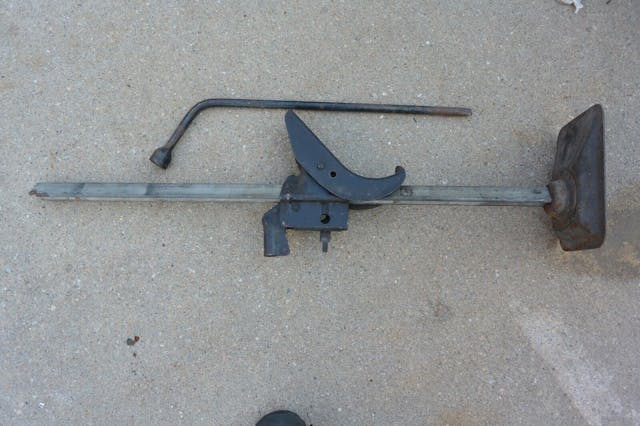
In a world of bumper covers, the thought of attaching a lifting mechanism to the exterior of your car and using it to lift the vehicle is some type of strange fever dream. It wasn’t always that way though. Flat tires have been around longer than the automobile and the need to pick up the car followed right along. Bumper jacks are good in concept but the lack of any safety catch or stabilization to keep from tipping over makes them treacherous to use. They still have utility in off-road situations but that can also make use even more dangerous.
Verdict: Keep as a reminder of how far we’ve come.
Brake pliers
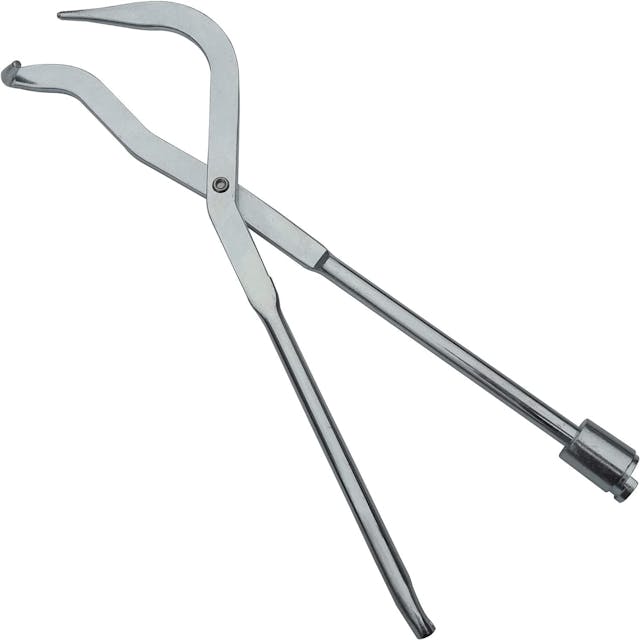
Somehow in the history of cars, there have been just two types of brakes commonly found behind the wheels: Drum or disc. Drum brakes can provide all the stopping power needed while also wearing like iron thanks to the enclosed and thus relatively debris-free nature of the design. That same design also has a handful of tension springs stretched carefully over small studs that can be serviced with groove-joint pliers and a screwdriver, but there are also brake pliers that rose and slipped from popularity right alongside drum brakes.
With modern materials and the relatively limited use of drum-brake cars, servicing drums has gotten less common to the point that while special tools can make the job easier it is only marginal and certainly not required.
Verdict: Keep them if you’ve got them but can likely pass if building your toolkit.
Growler
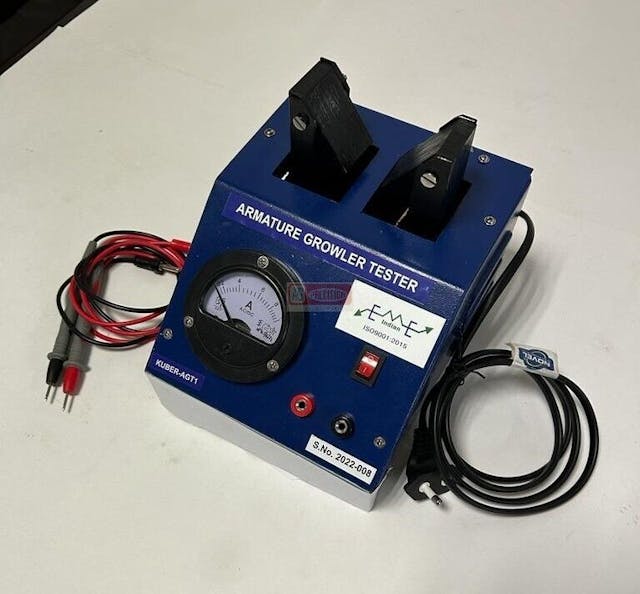
We aren’t talking about that curmudgeon of a mechanic who seems to only communicate in grunts and growls as the ratchet clicks to remove parts. No, the growler here is used to test the windings of a motor or generator. The armature is placed on a bed that flows alternating current into the windings. Using a ferrous rod to locate the magnetic field that will be created by a short makes for easy diagnostics. The price drop that came with the mass production and parts sharing between various models relegated these to hobby benches or the back room of specialist shops. Since rebuilding motors or alternators has become rare, these are practically a novelty.
Verdict: Keep if you’ve got the space, but often these find problems that are difficult to source parts to fix.
Vernier caliper

The increase in affordable precision has been quiet but amazing for at-home DIY projects. Good precision measuring devices used to be limited to the hands of skilled technicians and specialists in machine and fabrication shops. It took skill and training to properly use and read items like the vernier scale on calipers used in fabrication and precision machine work. Then digital calipers entered the market and the prices dropped year after year to the point that now a set of calipers accurate enough for most home use can be had for under $50.
Verdict: Use what you like and what works best for you. Regardless of what that is, be sure to keep any and all precision tools stored carefully to prevent damage.
Timing light
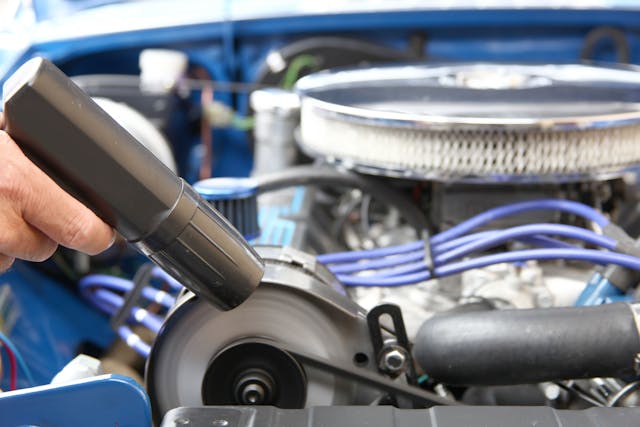
When we first wrote about tools that were fading from popularity last year, the comments section lit up with the suggestion that timing lights were left out. It’s been decades since a car rolling off the assembly line featured a tunable distributor, as the ignition is often now controlled by a computer working off data provided by a crankshaft or camshaft position sensor (or both) to control the firing of individual coils for each spark plug and cylinder. Adjusting the timing of the spark in the cylinder is changed with a laptop rather than a wrench and strobe light. Timing lights have been relegated to specialist shops and DIY garages.
Verdict: Keep it if it works, but consider a modern digital light if building a vintage-focused toolset as the features and capability have come a long way since the strobes of old.
Point file
Another from the ignition side of things. Even before computerized ignition was the advent of electronic or non-points-based discharge. Long gone are the days of having to swap a set of points on the side of the road or scratch off the char of the small faces to allow the coil to charge. A points file was handy for if or when a condenser would fail or the points would otherwise get crummy enough to not allow enough current through.
Verdict: If one is already in your glovebox, keep it for nostalgia’s sake and just in case. You never know who it might help.
Brake lathe or shoe arcing machine
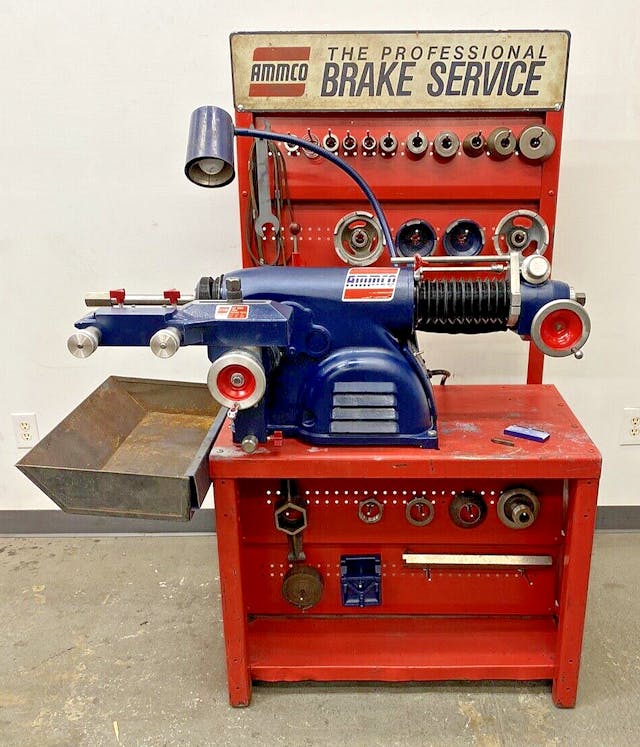
Drum brakes often have more swept area compared to disc brakes, but that additional friction material is useless if it is not in contact with the brake surface. The heat retention characteristics of drums can sometimes lead to warping that would previously be cleaned up by “turning” the drums to create a nice concentric surface around the shoes. While drums can still be found on modern cars the drums are often cast so thin that turning them is no longer an option and instead we must skip straight to replacement.
Shoe arcing machines do the same thing as brake lathes but set the radius of the friction material to match that of the drum. It’s critical for good brake performance on some vintage cars but has faded from popularity significantly due to the health concerns of grinding friction materials—especially asbestos.
Verdict: Save if you’ve got the space, or sell to a vintage shop if you don’t. We likely won’t see new versions of these tools made and they so help keep our cars safely going down the road.
***
Check out the Hagerty Media homepage so you don’t miss a single story, or better yet, bookmark it. To get our best stories delivered right to your inbox, subscribe to our newsletters.
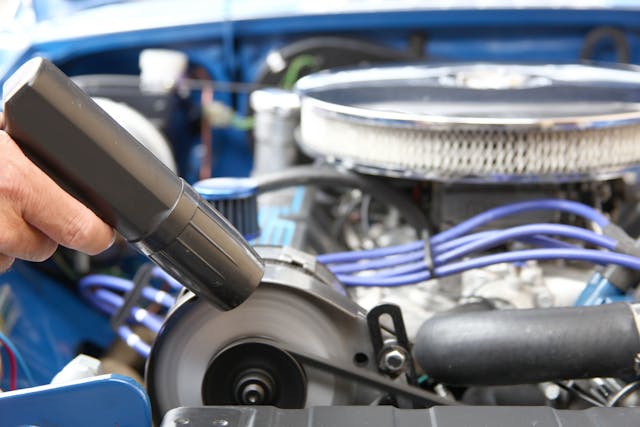
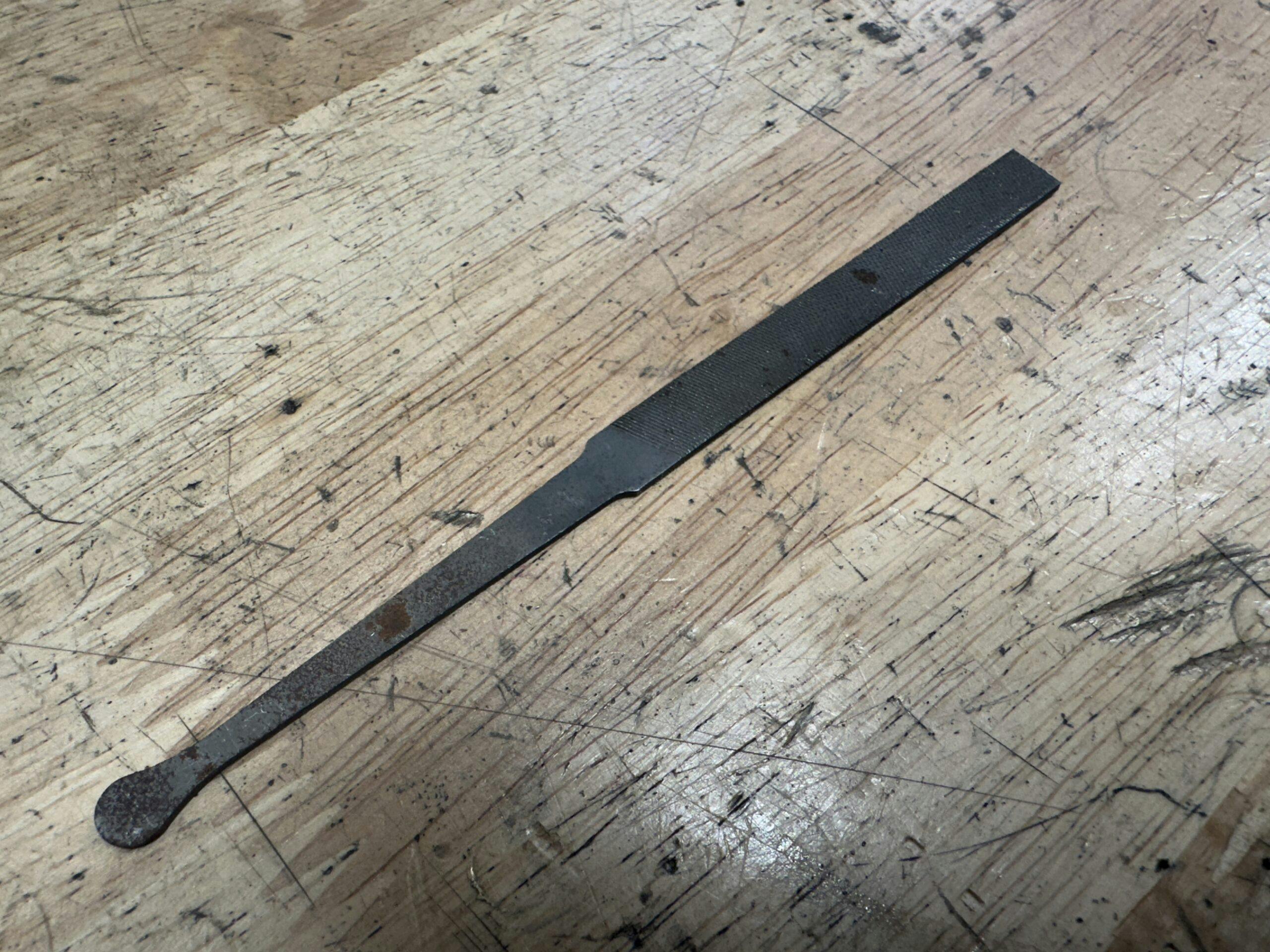
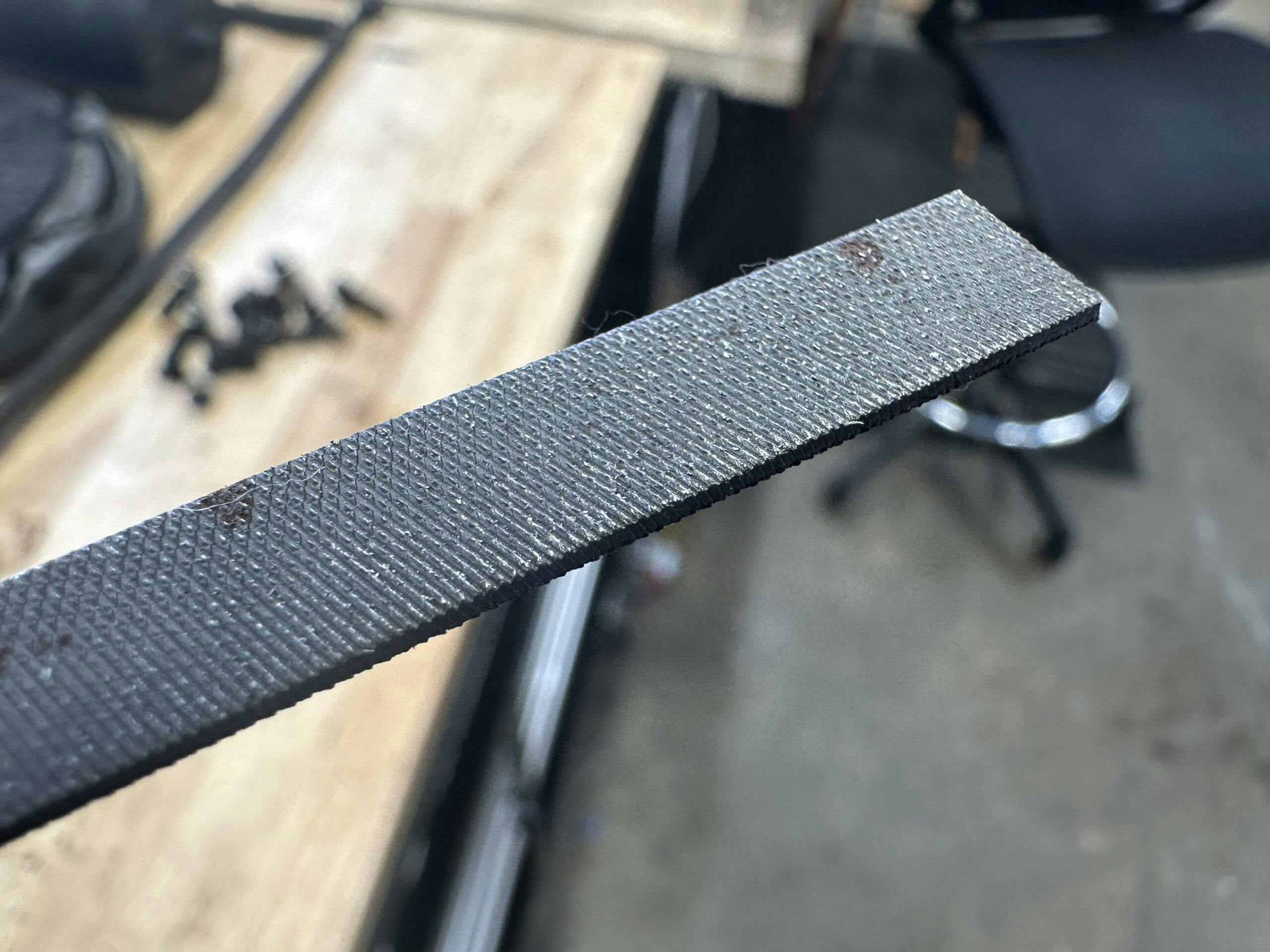


I made the transition from vernier to dial to digital and never looked back. Especially since digital switches to metric at the touch of a button.
Still use brake pliers, timing light, point file and vernier. With 6 cars older than 1973 how could I not.
I have used a bumper jack to break the bead on a tire. Notice there is usually a curve in the base. Fits the rim quite nicely. Saved my ass on several occasions.
What are we going to do with all these old tools if we don’t have a younger person to pass them down to.?
I hate to think that they’re going to end up in a dumpster when I pass on, but they probably will. Sad.
Your earlier comment about brake servicing equipment and asbestos exposure reminds me of a handy OSHA memo…
https://www.osha.gov/sites/default/files/publications/shib072606.pdf
bumper jack is not a tool ,,, I have sockets for thermo vacuum switches
Still use the timing light and drum brake tools for my 3/4 scale 32 Ford roadster. It has a drive train originally from a 92 S10 truck. The 2.8 V6 lost it’s computer, TBI, computer distributor, O2 sensor and the EGR. It is bored and stroked to 3.2, has a blower and a modified 390 Holley carb. Distributor is a Mallory Unilite and is the only electronic device in the car and it has had a module failure! My cousin couldn’t believe I was still using a carb and I told him I didn’t want anything on the car I couldn’t adjust or work on! I have a friend who just completed a 2 year custom rebuild of a 67 Camaro convertible. He went with 5.3 LS, aftermarket FI, and a 4L60E trans. They haven’t been able to get the tune so that the LS runs right! It also took them 2 months to figure out why the 4L60E wouldn’t shift out of first gear! He said he wished he had put his carb’d 383 and the 200R4 from his hot rod in it!
This article is fine if you own a car made after 1990, but for older cars it doesn’t apply. I have a car with drum brakes, and nobody makes a good disc conversion for it. Brake pliers are required for anybody dealing with drum brake repairs. I see many complaints on the forums about the horrible drum brakes. I have driven drum brake cars that LITERALLY required TWO feet on the pedal to quickly stop the car!! Scary to drive. I found the issue —- the brake shoe lining did not contact the drums due to different shoe and drum arcs. It took me a while, but I found a truck brake shop that did “hobby cars” on the side. They relined my drum brakes with a proper soft lining and turned the drums and ARCED the shoes to the drums. Great pedal feel, and short stopping distances.
Yes points are easily replaced on many old cars with electronic ignition. After dealing with poor quality points I gave up on them. Glad I did. However, I still use my timing light to check out distributors to see if the advance mechanism works properly.
Yes I bought a digital caliper and EVERY time I went to use it the battery was DEAD. I finally tossed it in the trash can. Hard to beat a good mechanical caliper were you can read between the smallest divisions for best accuracy. Same with micrometers – far better resolution than a digital readout. Then again some cannot read an analog device and a digital display works for them.
Is there a way to buy that growler ?
This is the eBay seller’s listing that I used the image from. Looks like they previously had multiple but are currently out of stock. Might be worth sending them a message: https://www.ebay.com/itm/225473109553
Like to have that brake lathe in my shop also !
I still use the bumper jacks for my 1975 Olds 88 and 1977 Dodge Royal Monaco. I do block the wheels, of course, and don’t get under the car unless it is on jackstands.
There are some of us with older cars that use a timing light regularly ,my MGTF is one . Although the original manuals set timing statically to TDC with the newer fuels and a rebuilt distributor, I. needed to set it at 10-13 degrees BTD at idle. I just spent months trying to get a Advance Timing light. None of the newer digital ones worked at all. They’d flash OK but would not measure advance. Several ones purchased locally did dial back but were horribly inaccurate. I finally found a new old stock one on eBay that works on positive ground Actron ASE Advance Timing Light CP7528 BRAND NEW FACTORY SEALED. It works great.
My shop specializes in older carburetor and point style ignition systems. One tool you did not mention and we struggle finding new or finding someone to repair is a dwell meter.
Points file is no good unless you have a dwell meter. Another item not mentioned is a feeler gauge. Can’t gap points or spark plugs with out one.
Thanks for looking back at some things today’s new mechanics have no clue.
Last two techs I hired didn’t know what a dwell meter is and how to use it. I asked them on the initial interview and told them to go home and look it up.
Anthony Merjano
Anthony’s classic auto werks
165 Borland ave
Auburn, CA 95603
530-887-0800
I consider the lathe you show a machine, but I still have and use all the tools. The ultimate in environmental protection, is to fix what you have and keep it in usefill condition. This requires no destruction of the environment, or use of endangered materials. Most old cars don’t use rare earth materials.
One more item. A match book. When a feeler gauge is not available a match book would work setting the point gap.